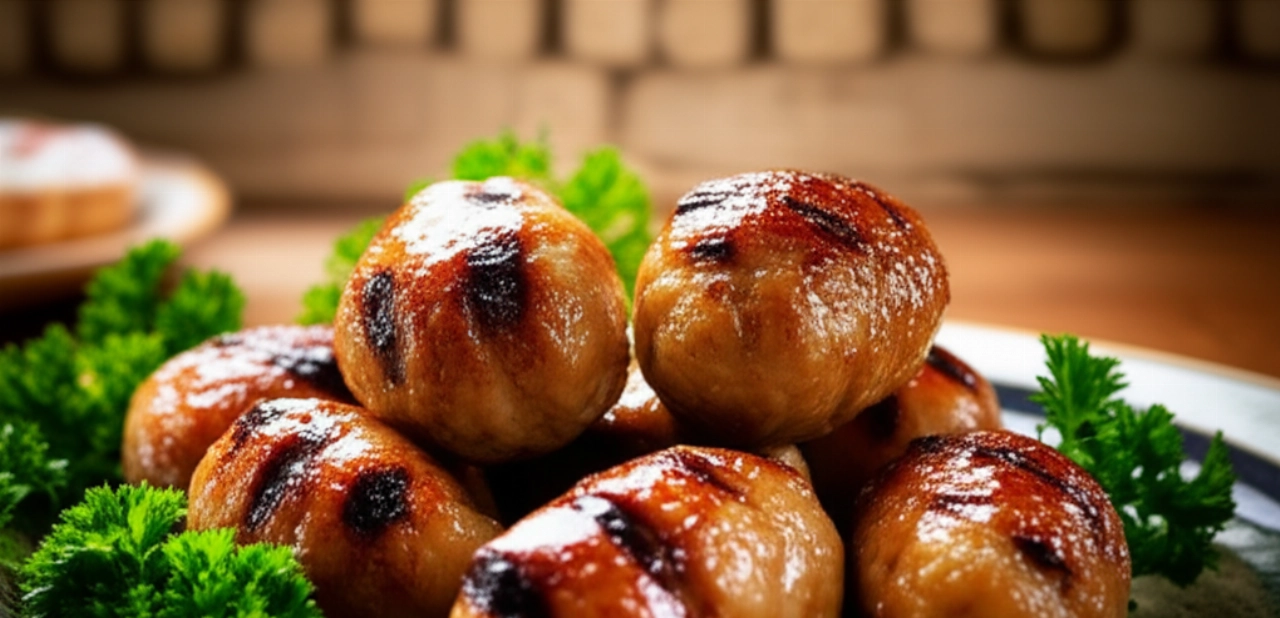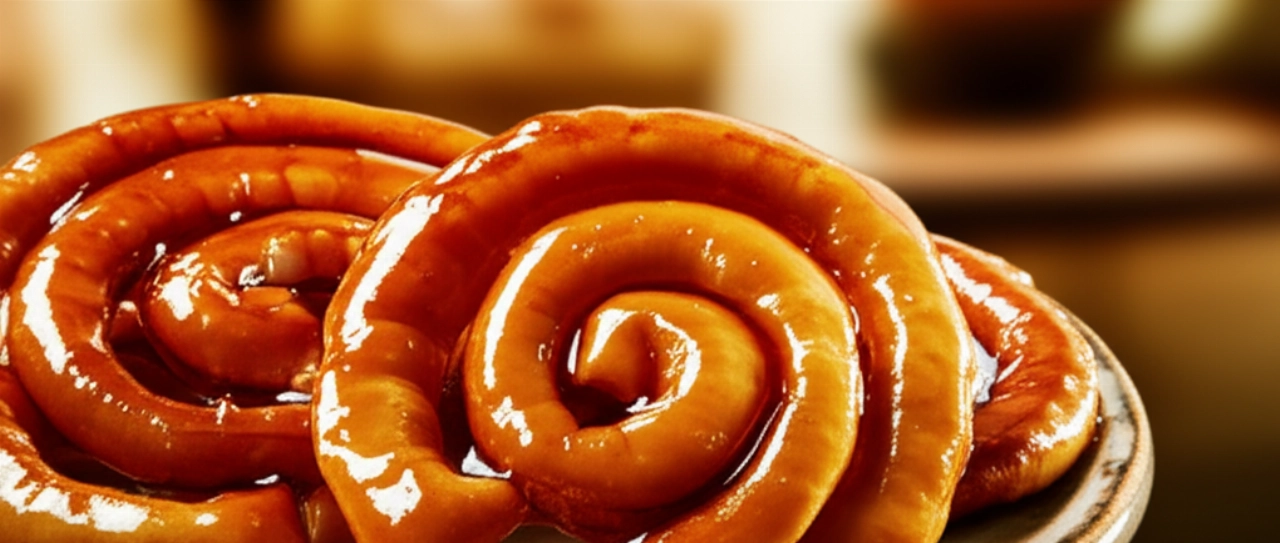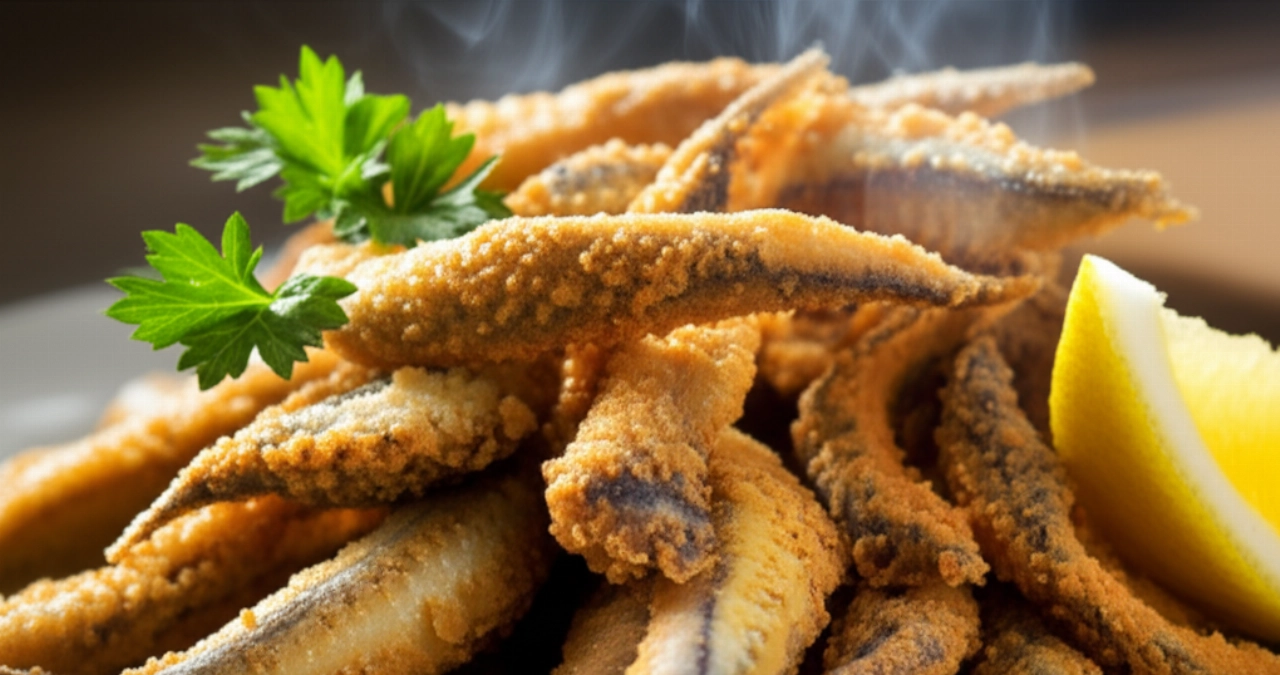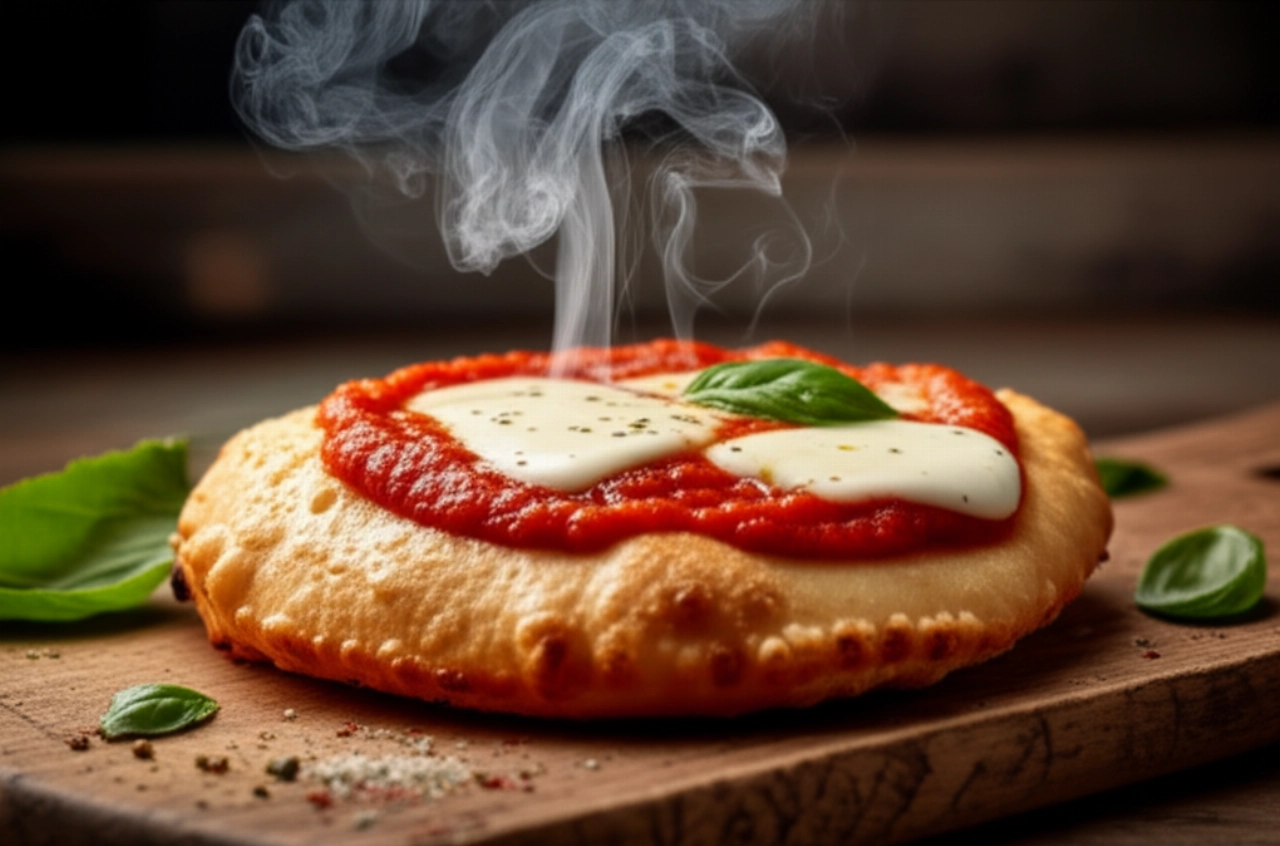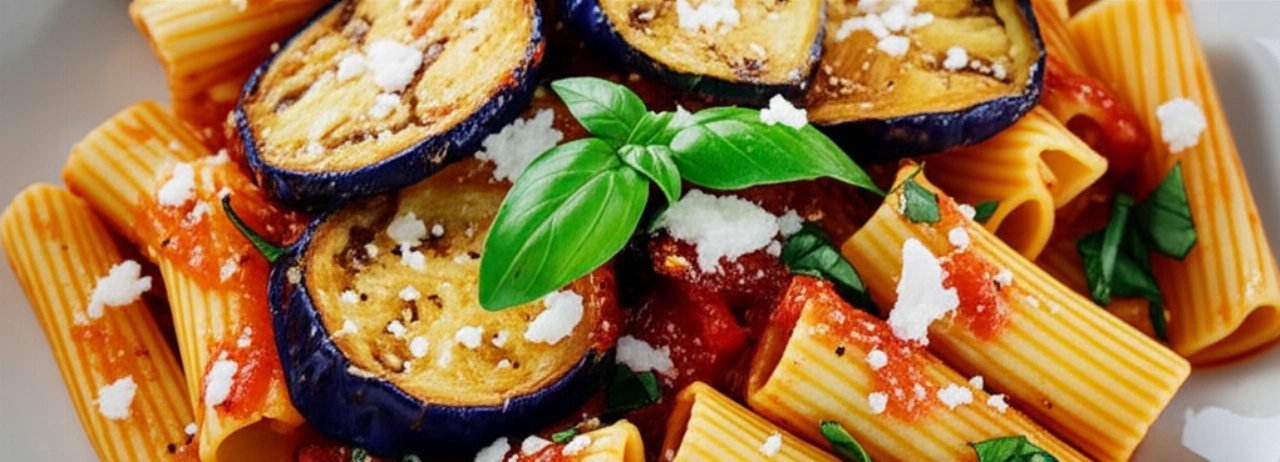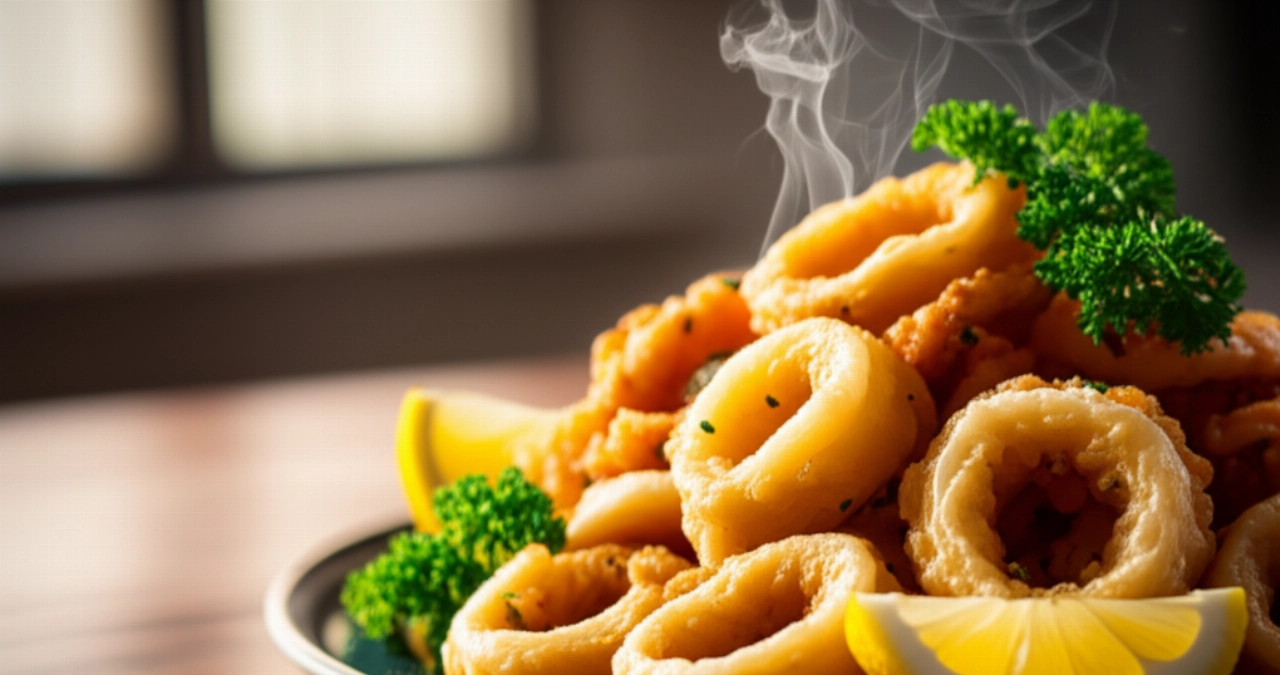There's a scent that speaks of celebration, family evenings, laughter, and that simple joy only traditional cuisine can offer. We're talking about fried panzerotti, true crescent-shaped delights of leavened dough, golden and crispy on the outside, with a stringy and flavorful filling that wins you over at the first bite.
But how many times have you tried making them at home only for them to turn out greasy, hard, or with the filling escaping during cooking? Finding the right recipe, one that guarantees success, seems like a challenge.
Make yourself comfortable, because today I won't just give you a list of ingredients. I'll reveal all the secrets, tricks, and tips my Puglian grandmother passed down to me, to prepare perfect fried panzerotti, just as you would if you had grown up in the streets of Bari Vecchia. Success is guaranteed, and your guests will ask for seconds (and the recipe)!
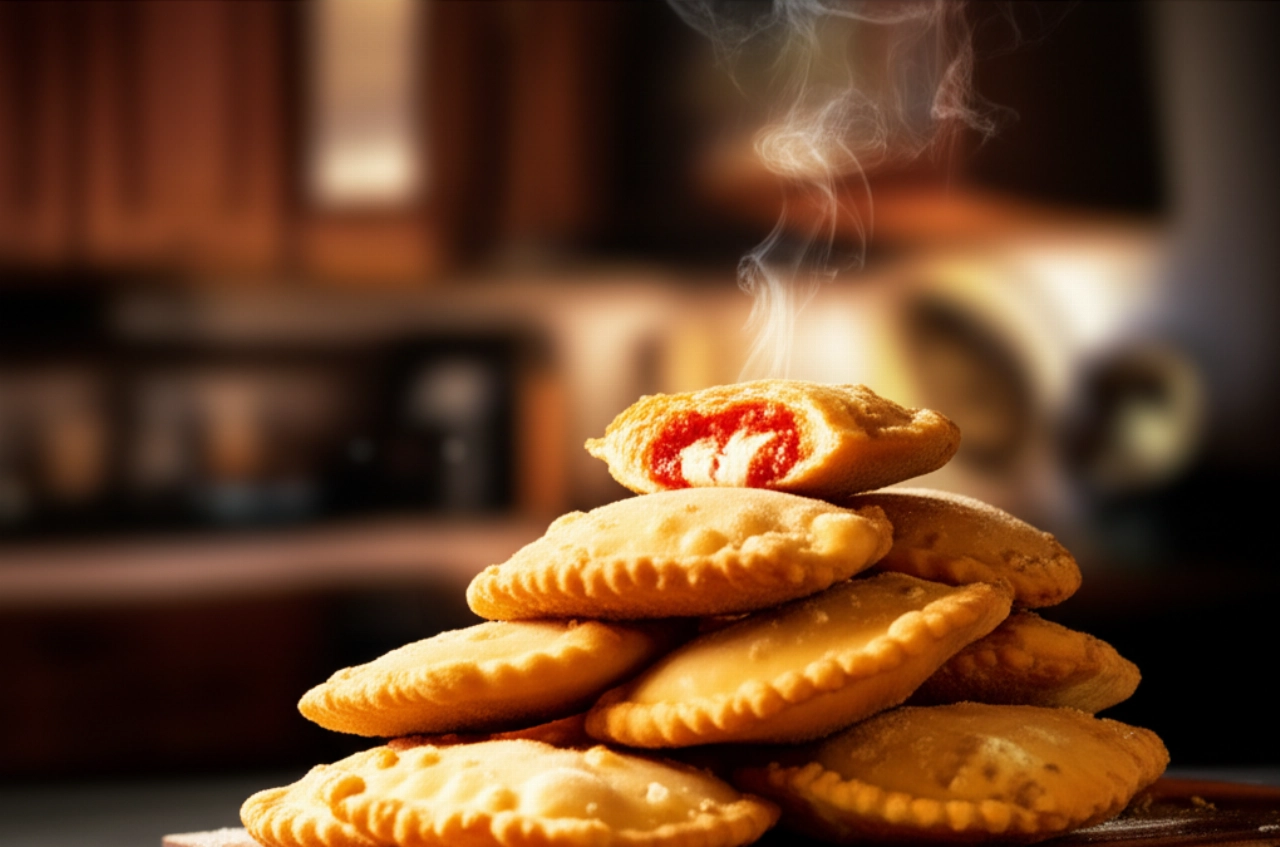
Fried Panzerotti: Perfect Crispiness and Filling That Stays In
The unique angle of this recipe, our promise, is precisely this: I will guide you step by step to achieve golden, dry, and incredibly crispy fried panzerotti, with a tomato and mozzarella filling that stays in place, stringy and flavorful, without ever "exploding" or making the dough soggy. Forget greasy or empty panzerotti; here you'll feel at home, with the certainty of an impeccable result.
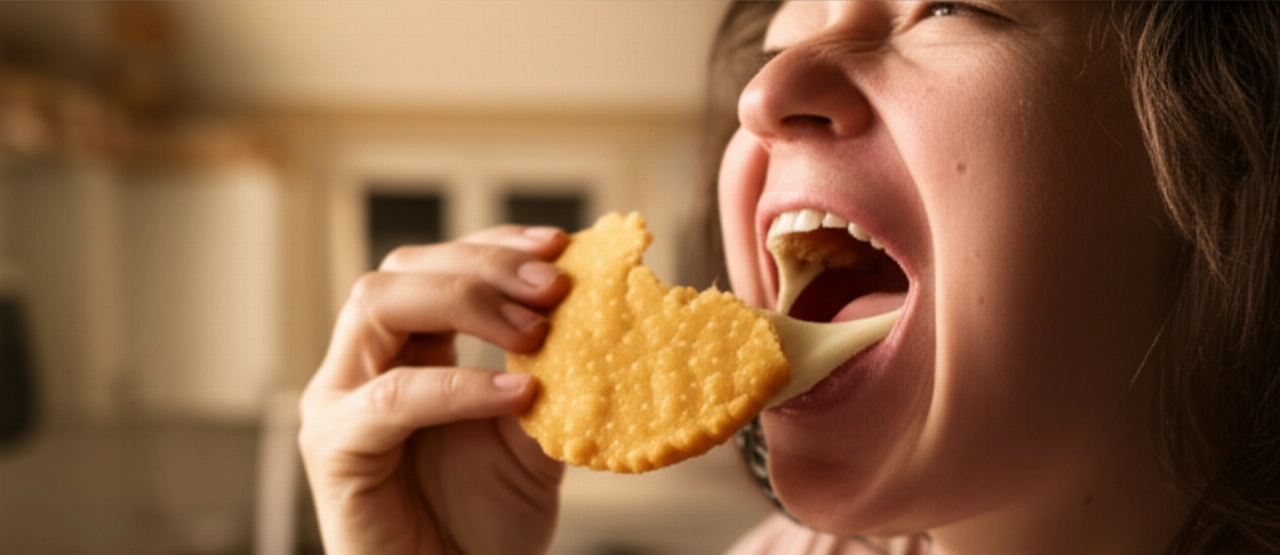
Smart Ingredients for Applause-Worthy Panzerotti: The Choice That Makes a Difference
It's not just a list; it's a reasoned selection. Every ingredient has its purpose, and knowing it will help you understand the magic created in the kitchen.
Flour
500 g of 00 flour or, even better, type "0" or "Manitoba" flour. 00 flour is fine for a lighter dough, but "0" or Manitoba, richer in gluten, will give you a more elastic and resistant dough, essential for leavening and for holding the filling without breaking.
Yeast
12 g fresh brewer's yeast (or 4 g dry brewer's yeast). Fresh yeast is always preferable for a more vigorous rise and a more authentic aroma. If using dry yeast, remember to activate it in warm water with a pinch of sugar.
Water
250-280 ml warm water. Temperature is crucial: it should be neither cold (slows down the yeast) nor hot (kills it). "Warm" means about 30-35°C, just slightly warmer than your hand.
Salt
10 g fine salt. Salt is essential for the dough's flavor, but it should never come into direct contact with the yeast, otherwise it inhibits its action. Always add it to the flour or at the end, after dissolving the yeast.
Extra Virgin Olive Oil
20 ml EVO oil. A touch of oil in the dough will make it softer, more elastic, and easier to work with. It also helps give that slight external crispiness when frying.
Sugar (optional)
1 teaspoon sugar. This is not for sweetness, but to "feed" the yeast and help it start faster, especially if using dry yeast.
Mozzarella
250 g pizza mozzarella or well-drained fior di latte. This is THE secret for a filling that doesn't escape and doesn't make the dough soggy. The mozzarella must be cut into small cubes and left to drain for at least an hour (or even overnight in the fridge) to eliminate excess water. Water is the enemy of frying!
Tomato Passata
200 g thick and flavorful tomato passata. Choose a good passata, perhaps our homemade tomato passata recipe. It must be thick, not watery, so as not to wet the dough too much. You can season it with a pinch of salt and oregano.
Frying Oil
1 liter peanut or high-oleic sunflower oil. These oils have a high smoke point, meaning they withstand high temperatures well without burning and without altering the flavor of your panzerotti. Frying will be cleaner and the panzerotti less greasy.
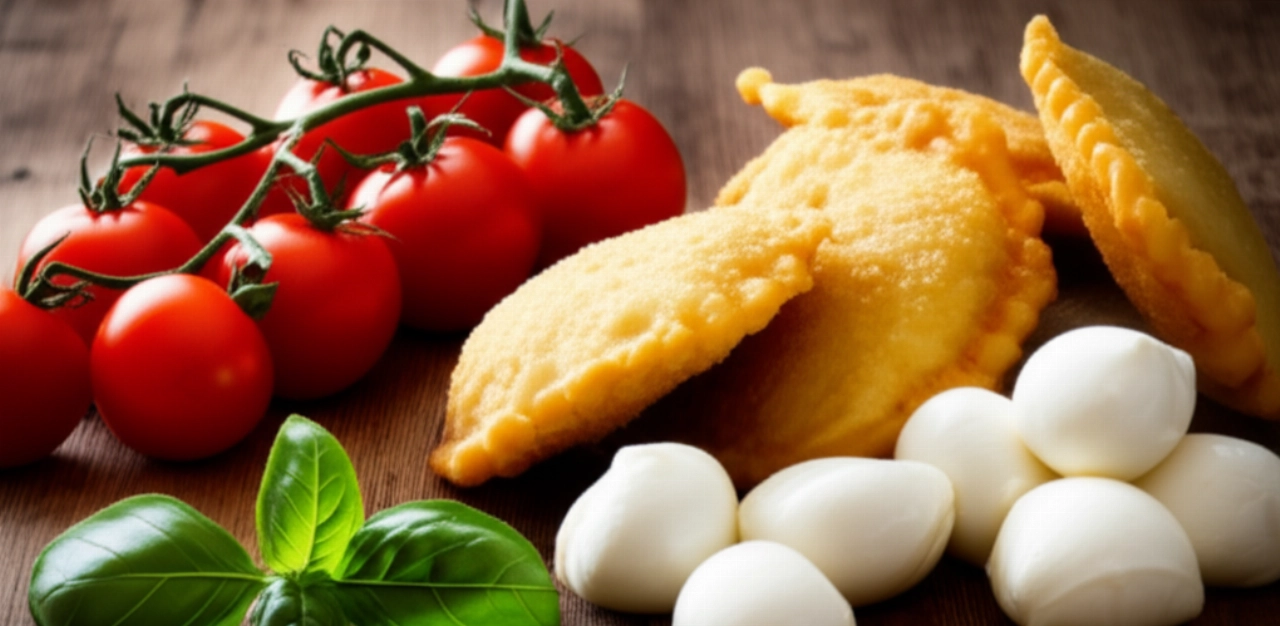
3 Common Mistakes That Ruin Your Panzerotti (and How to Avoid Them)
As a "guardian" of the kitchen, my job is to protect you from mistakes. Here are the most common pitfalls and how to avoid them for guaranteed success:
- Dough too hard or too soft: A dough that's too hard won't rise well, and the panzerotti will be gummy. One that's too soft will be difficult to work with and will break during cooking. The ideal consistency is soft, elastic, and slightly sticky, but workable. If it's too dry, add a tablespoon of water; if too soft, a tablespoon of flour, but sparingly.
- Filling too wet or too abundant: This is the number one mistake that causes panzerotti to "explode" during frying. The mozzarella must be very well drained! If the filling is too liquid or you put too much, the moisture will turn into steam, puffing up and breaking the dough. Use the right amount and make sure it's dry.
- Wrong oil temperature: If the oil is too cold, the panzerotti will absorb too much oil and become greasy and soggy. If it's too hot, they will burn on the outside while remaining raw inside. The ideal temperature is between 170°C and 180°C. Use a kitchen thermometer or do the toothpick test: if immersed in the oil it produces many bubbles, it's ready. If it smokes, it's too hot.
Grandma's Secret: The Magic Touch for Irresistible Panzerotti
My grandmother, with floury hands and a smile on her lips, always told me: "The secret to panzerotti isn't just in the ingredients, but in 'feeling' the dough and giving it the right time."
Her foolproof trick was double leavening and proper rolling. After the first rise, the dough should be gently deflated and allowed to rest briefly before forming the discs. And when rolling out the discs, don't make them too thin (they'll break) nor too thick (they'll be gummy). They should have a uniform thickness of about 3-4 mm. This ensures the panzerotto is soft inside and crispy outside, without the filling escaping.
Let's Prepare Puglian Panzerotti Together: The Step-by-Step Guide
Phase 1: The Perfect Dough (The Foundation of Everything)
- In a large bowl (or stand mixer), dissolve the fresh yeast (or activated dry yeast) in warm water with the teaspoon of sugar. Mix well.
- Add half of the flour and begin mixing with a spoon or the paddle attachment of the stand mixer.
- Incorporate the EVO oil and then the salt, away from the yeast.
- Gradually add the remaining flour, kneading vigorously. If using a stand mixer, use the dough hook for about 10-15 minutes at medium speed. If kneading by hand, work the dough on a floured surface for at least 15-20 minutes, until you obtain a smooth, elastic, and no longer sticky dough ball.
- Form a ball, lightly grease it with oil, place it in a large bowl, cover with plastic wrap or a damp cloth, and let it rise in a warm place (an oven turned off with the light on is perfect) for at least 2-3 hours, or until it has doubled in volume.
Phase 2: The Flavorful Filling (The Heart of the Panzerotto)
- While the dough is rising, prepare the filling. Cut the mozzarella into very small cubes (about 0.5 cm) and place it in a fine-mesh colander, pressing it lightly to drain all excess water. You can also pat it dry with paper towels. This step is CRUCIAL.
- In a bowl, combine the drained mozzarella with the tomato passata. If desired, add a pinch of salt and oregano. Mix well and set aside.
Phase 3: Shaping and Second Rise (The Magic Takes Shape)
- Once the dough has risen, gently turn it out onto a lightly floured surface. Gently deflate it with your hands, without overworking it.
- Divide the dough into portions of about 60-70 g each (for medium-sized panzerotti). Form into balls.
- With a rolling pin, roll out each ball into a thin disc (about 3-4 mm thick) and about 15-18 cm in diameter. Do not make the edges too thin.
- In the center of each disc, place a generous tablespoon of filling, leaving the edges clear. Do not overfill!
- Fold the disc in half, forming a crescent. Seal the edges well by pressing with your fingers, then go over them with the tines of a fork to ensure they are tightly closed and to create the classic decorative pattern. This step is crucial to prevent the filling from escaping during frying.
- Arrange the formed panzerotti on a floured tray, cover with a clean cloth, and let them rise for another 20-30 minutes. You will see them puff up slightly.
Phase 4: Perfect Frying (The Moment of Truth)
- In a large, high-sided pan (or deep fryer), pour abundant peanut or high-oleic sunflower oil. Heat the oil until it reaches the ideal temperature of 170-180°C.
- When the oil is hot, immerse 2-3 panzerotti at a time (do not overcrowd the pan, otherwise the oil temperature will drop too much).
- Fry for about 2-3 minutes per side, or until they are golden brown and puffed up.
- With a slotted spoon, drain the panzerotti and place them on a plate lined with absorbent paper to remove excess oil.
- Serve immediately, hot and stringy!
Tips and Frequently Asked Questions about Fried Panzerotti
Can I prepare panzerotti in advance?
Yes, you can prepare the dough and let it rise in the refrigerator overnight. In the morning, take it out an hour before using it to bring it back to room temperature. You can also form the panzerotti and freeze them raw on a tray; once hardened, transfer them to food bags. Fry them directly from frozen, slightly increasing cooking times.
How can I prevent the filling from escaping?
The secret is threefold: 1) well-drained mozzarella, 2) do not overfill, 3) perfectly seal the edges, first with your fingers and then with a fork. If you see small cracks, pinch the dough to close them.
What is the ideal oil temperature for frying?
Between 170°C and 180°C. If you don't have a thermometer, do the toothpick test: dip it in the oil, if many lively bubbles form around it, the oil is ready. If it smokes, it's too hot.
Can I bake them instead of frying?
Yes, you can bake panzerotti for a lighter version. Brush them with a little EVO oil and bake in a preheated oven at 200°C (static) for about 15-20 minutes, or until golden. They won't be as crispy as fried ones, but still delicious. Remember that the true traditional recipe calls for frying!
Can I use other fillings?
Certainly! Puglian tradition also includes fillings with strong ricotta, or with stewed onion. But you can experiment with whatever you like best: ham and cheese, spinach and ricotta, or even a sweet version with Nutella!
A Masterpiece of Flavor and Tradition
There you have it! Now you no longer just have a recipe, but all the secrets to bring to the table a dish that tastes of home, tradition, and love. Your fried panzerotti will be a triumph of flavors and textures, capable of eliciting a "Wow!" from anyone who tastes them.
Don't be afraid to get involved. Cooking is an act of creativity and love. But start with this solid and foolproof foundation, and you'll see that applause will not be lacking. Set a beautiful table, call your loved ones, and enjoy the joy of sharing a piece of Puglia made with your own hands.
Have you tried our recipe? We're very curious to see your masterpiece! Leave a comment below, tell us how it went, or share a photo on Instagram by tagging @CercaRicette.it. If you loved these panzerotti, you can't miss our recipe for the Original Bari Focaccia or another Puglian classic like Orecchiette with Puglian Ragù.
